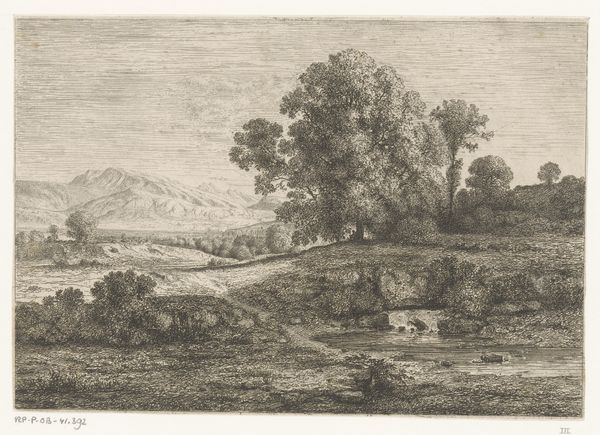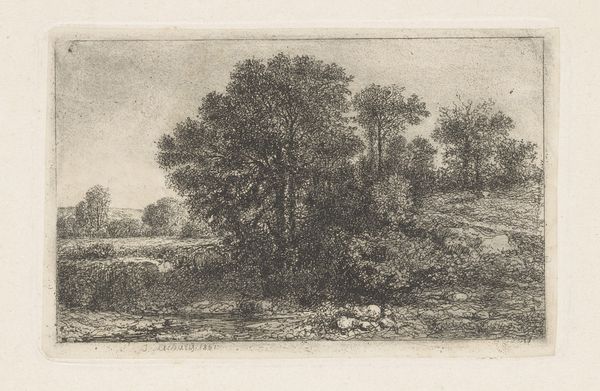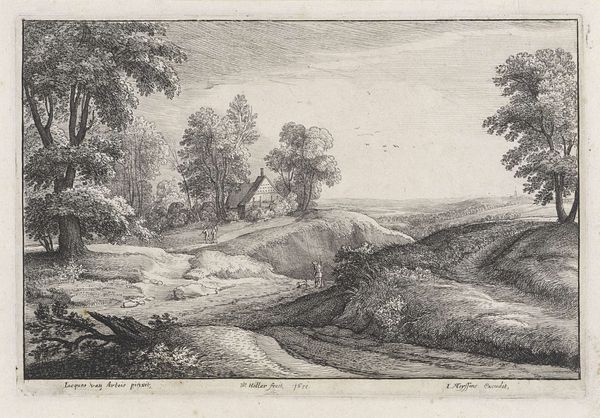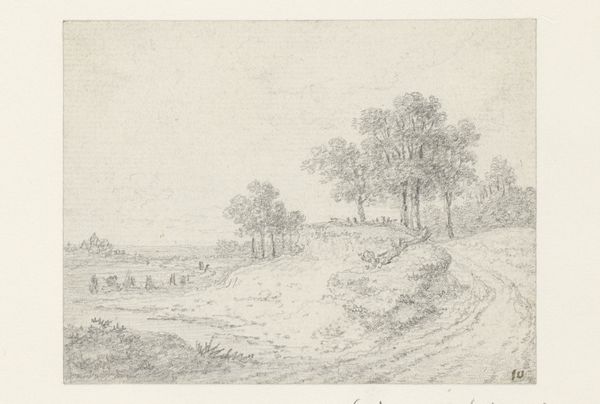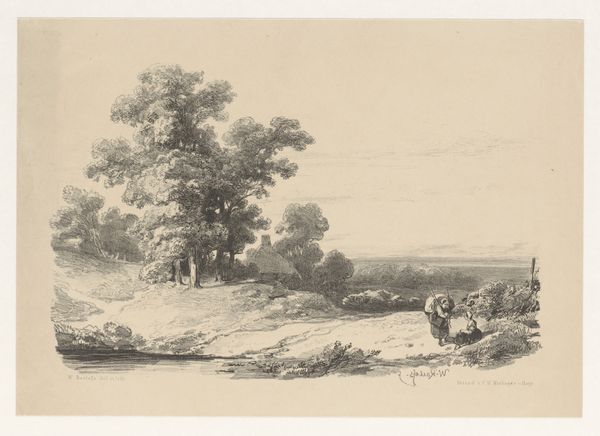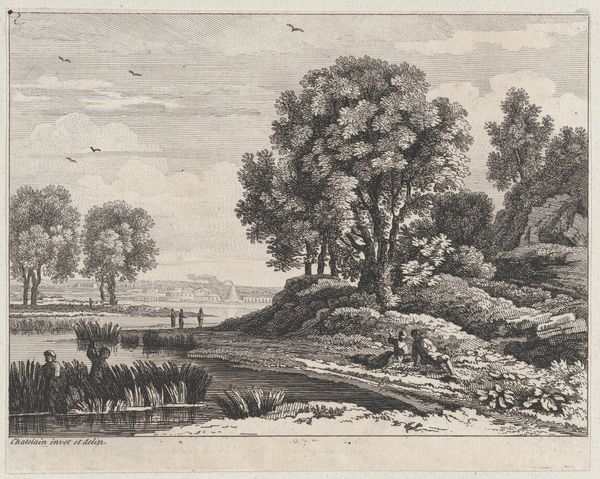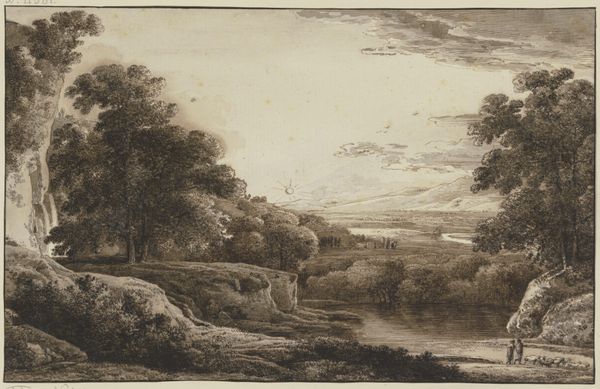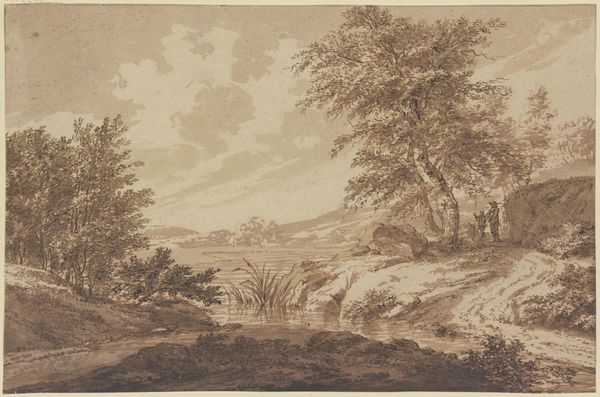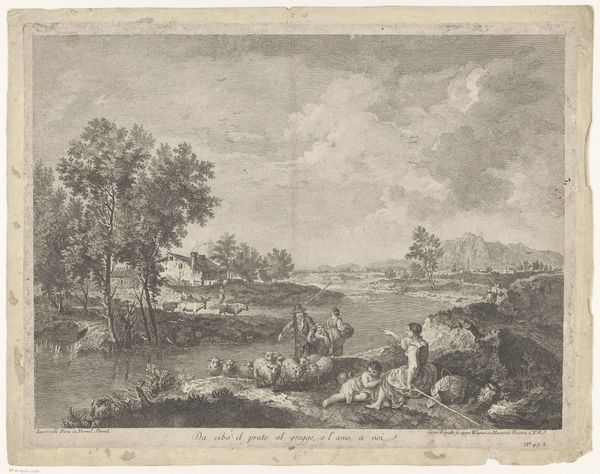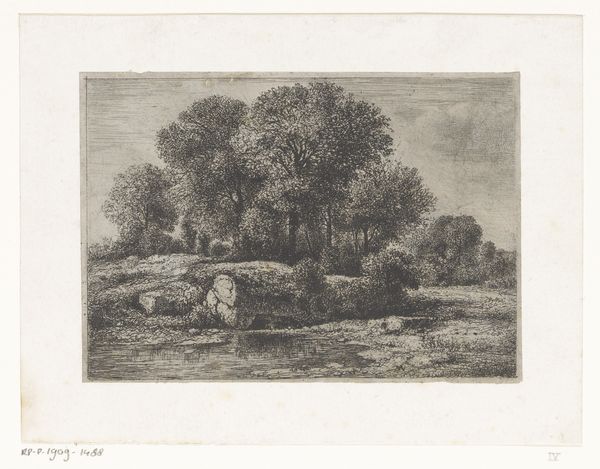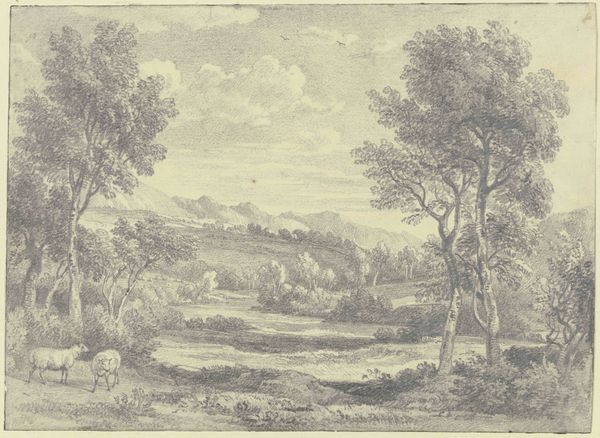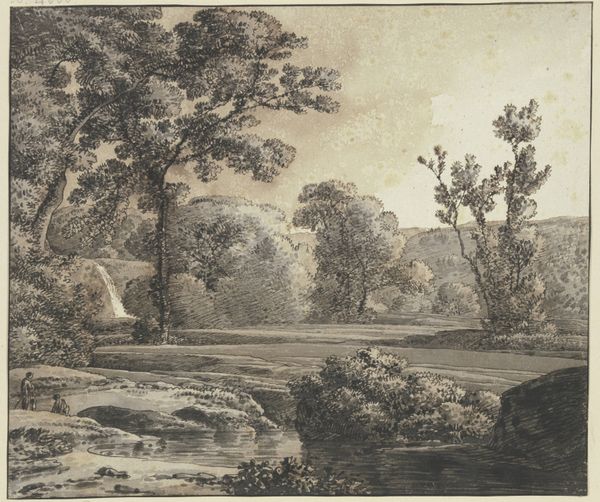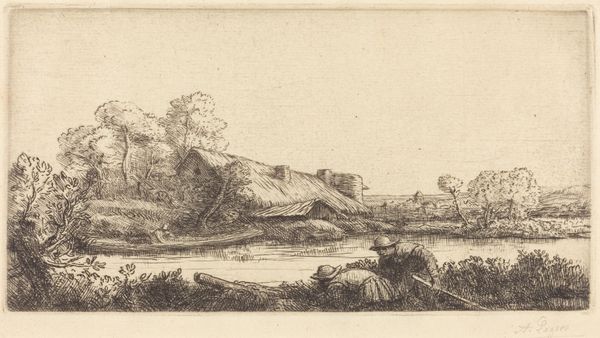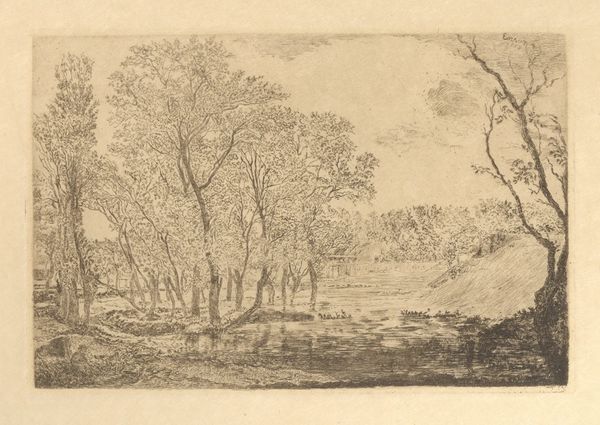
drawing, print, etching, ink, engraving
#
drawing
# print
#
etching
#
landscape
#
ink
#
romanticism
#
line
#
engraving
#
realism
Dimensions: height 167 mm, width 235 mm
Copyright: Rijks Museum: Open Domain
Curator: Jean Alexis Achard, working roughly between 1817 and 1884, captured this "Glooiend landschap met een beek", a "Rolling Landscape with a Creek," through etching and engraving, working in ink on paper. Editor: It has a strangely calming yet somewhat melancholic feel, doesn't it? All those intricate lines give it an incredible sense of texture, almost like feeling the rough bark of the trees. Curator: Definitely. This piece fits within the Romanticism and Realism movements, reflecting both an idealized vision of nature and a close observation of its details. You see this in the overall composition, with its gently sloping hills, but then zoom in on the artist’s use of very detailed etching, a testament to the increasing access people had to the printed word in the 19th Century. What we see as an idyllic, perhaps even quaint, image speaks to broader patterns of production and consumption. Editor: I hadn't considered that connection to mass media! When I consider the materials, though—ink and paper—I wonder about their origin and accessibility. Was this paper specifically milled, the ink mass-produced, allowing Achard's work to reach a wider audience through affordable prints? The materiality directs us towards production, consumption, and class. Curator: Exactly! And thinking about that, consider the context: industrialization was transforming landscapes and labor practices during Achard’s life. His choice to depict the undisturbed beauty of nature perhaps reveals a deeper desire for a return to simpler, pre-industrial values. Romanticism so often harkens to a time before this rapid acceleration we see happening in that era. Editor: Right, and that tension is palpable in the image. I like the emphasis on materiality and production to show an argument from the piece. To me, that creek represents not just nature, but the very essence of material flow, shaping the landscape, providing resources, connecting communities. And the mountains! Such depth. Curator: It’s a powerful representation, indeed. It really challenges the dichotomy between idyllic nature and material realities. The means of creating art becomes part of the art’s social commentary itself! Editor: Precisely. I’ll certainly not view such landscape pieces as “quaint” so easily ever again. Curator: And I think I appreciate how my emphasis on sociopolitical dynamics gets new life in discussions about materiality.
Comments
No comments
Be the first to comment and join the conversation on the ultimate creative platform.
